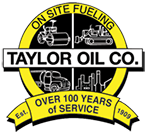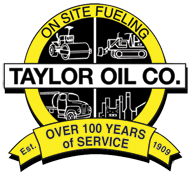Driving With Underinflated Tires: The harsh winters of Central New Jersey can really do a number on heavy-duty vehicles and their tire pressure. In fact, the weather can be to blame for loss of tire inflation pressure (PSI) and decreased fuel mileage. Basic tire maintenance can help truckers avoid missing deadlines due to underinflated tires. Check out what you need to know about changing temperatures and tire PSI.
Changes in air temperature can impact how fast air molecules can move within the tire, causing a fluctuation of PSI. So, if you’re a trucker starting out in Florida for a delivery in New England, you will likely notice a dramatic change in PSI by the time you get there. Hot tires not only affect pressure but also the sound of a tire.
In fact, warm tires after a long drive can experience a 15 percent increase in inflation pressure compared with cold tires.
As the driver, it’s impossible to know the exact pressure rating of your tires by sight. You must be on the lookout for common signs of under-inflation including:
- The TPMS light illuminates on the dashboard
- You get reduced steering and handling
- You have longer stopping distances
- You feel more road vibrations
- You hear flapping noises coming from the tires
Dangers of Driving With Underinflated Tires
Driving on a tire under the recommended PSI can reduce the life of the tire tread and reduce fuel economy. With under-inflated tires, the rubber-to-ground ratio is incorrect and will result in friction, which leads to overheating and premature wear and tear. You may even experience a dangerous blowout on the highway.
There are mandatory minimum requirements set by the U.S. Department of Transportation in regards to tread depth on all commercial vehicles: 4/32-in. for the steer tire position and 2/32-in. for all other positions. Due to these DOT requirements, truckers should check their tires regularly for sufficient PSI and tire tread before setting out on a road trip.
What do the Numbers Mean?
PSI is a unit of measurement for inflation that includes the maximum load capacity of the vehicle. Other factors that may affect this measurement include whether “steer” or “drive” tires are being used, the tire brand and the tire size.
A maximum cold inflation pressure should be stamped on your wheel rims, typically set at 120, 130, or 140 PSI. Steer tire pressure, for example, can be set at 110 PSI while drive tire pressure can be set at 85 PSI. You can measure tire inflation with a universal tire pressure gauge with a 3 PSI plus or minus accuracy rating.
There really is no perfect PSI number, but certainly weather can negatively affect tire pressure and how fuel efficient your truck will be. As we come upon spring, it’s always a good idea to remember to inspect your tires for appropriate tire pressure levels before you head out on the open road.
Contact Taylor Oil to schedule on-site fuel deliveries to save you time and hassle!


